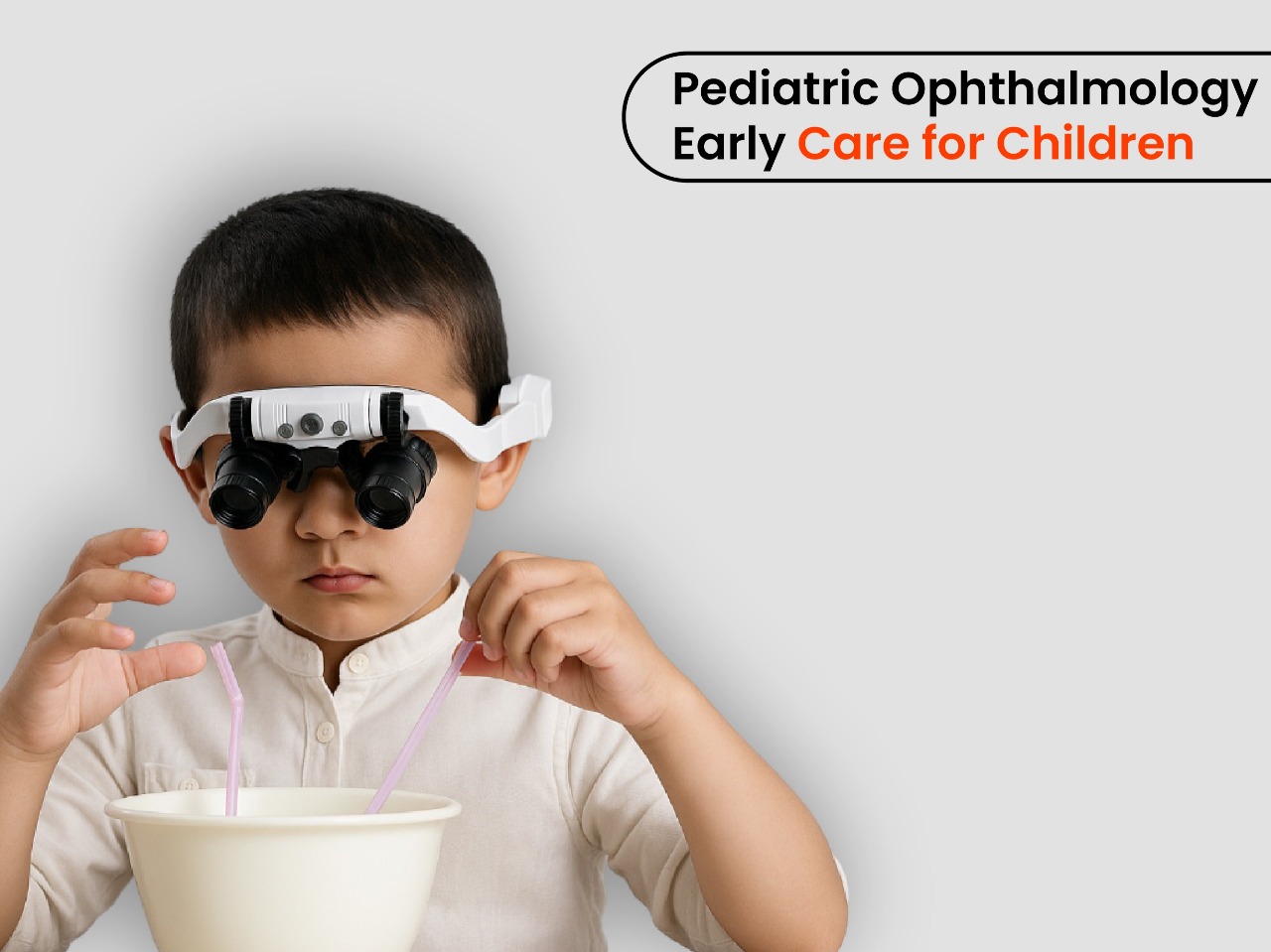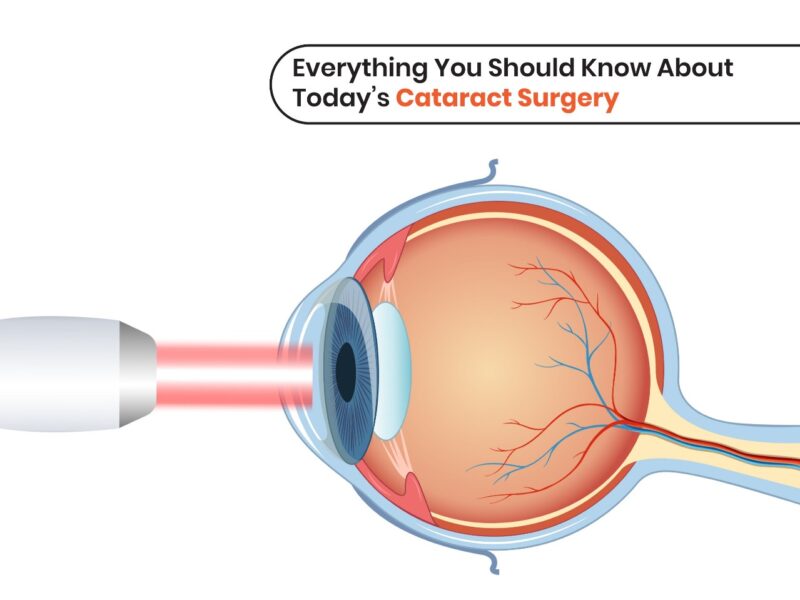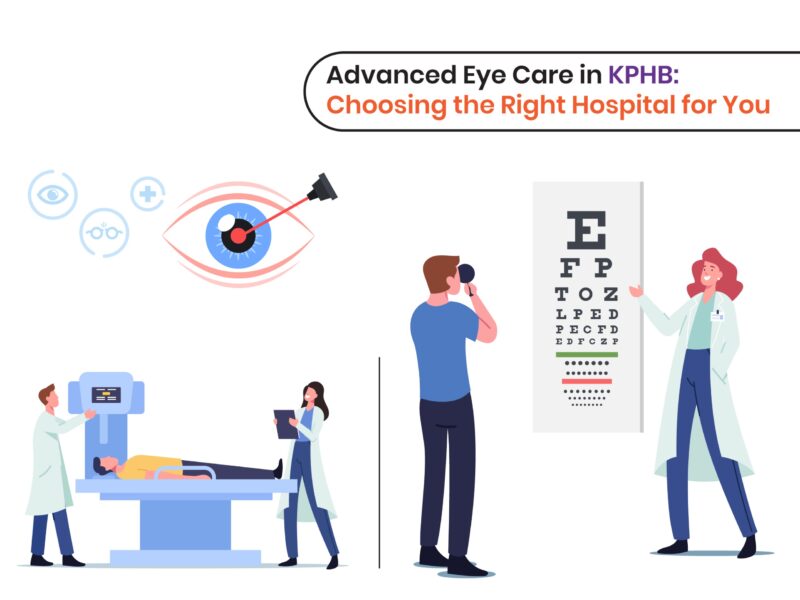Pediatric vision care holds immense significance in providing children with a clear and boundless visual experience. Identifying and addressing eye conditions at an early stage is vital for healthy growth, enhancing learning abilities, and laying the foundation for a brighter tomorrow. Medivision, a leading Pediatric ophthalmology hospital in KPHB, is renowned for its cutting-edge technology and team of highly skilled ophthalmologists. This blog explores the importance of pediatric vision care, emphasizing the advantages of early detection while outlining effective management strategies for different childhood eye conditions.
Why Early Detection Is Important
In contrast to adults, children rarely articulate vision problems easily. They may lack the communication skills or awareness to recognize and report an issue. Since they do not know what normal clear vision truly is, many visual difficulties remain unnoticed, potentially hindering their overall development. Pediatric ophthalmologists in KPHB emphasize that early detection of eye issues in children is essential for multiple reasons:
Critical Period for Development
The first few years of a child’s life represent a crucial window for brain and visual system development. During this period, the brain rapidly forms connections that influence how children process and respond to visual information. If vision problems are left unaddressed in these early years, the brain may adapt incorrectly, leading to permanent visual impairment. Early detection and timely intervention ensure that proper visual pathways form correctly, supporting both healthy vision and overall neurological growth.
Unlocking Learning Potential
Vision is one of the most important tools for learning. Children rely heavily on their sight to read, recognize letters, and absorb information from the classroom environment. When vision problems go undiagnosed, they may struggle with reading, fall behind in academics, or even develop learning difficulties that could have been prevented. Identifying and treating vision issues early gives children the ability to perform to the best of their abilities, enabling them to build confidence and unlock their full academic potential.
Enhanced Social Interaction
Good vision doesn’t just affect learning it also plays a vital role in social development. Children with clear vision are able to fully participate in play, sports, and group activities. On the other hand, uncorrected vision problems can lead to avoidance of social situations, low self-esteem, or feelings of isolation. By ensuring proper eye care from an early age, children can engage more confidently with peers, strengthening both social skills and emotional well-being.
Preventative Measures
Early diagnosis of conditions such as amblyopia (lazy eye) or strabismus (crossed eyes) is critical. When detected promptly, these issues can often be corrected through treatments like glasses, patching, or therapy, preventing long-term or permanent vision loss. Proactive eye care during childhood lays the groundwork for healthy eyesight that lasts a lifetime.
Seeing Clearly: Vision Screening and Eye Exams for Children’s Eyes
Vision screening and regular eye exams form the cornerstone of pediatric vision care, ensuring that children’s eyes are healthy and developing properly. Pediatric ophthalmologist eye surgeons in KPHB emphasize that timely diagnosis is critical, as early intervention often determines long-term visual outcomes. Understanding the difference between vision screening and comprehensive eye exams helps parents make informed decisions about their child’s eye health.
Vision Screening
Typically performed by a pediatrician, school nurse, or trained professional, vision screening serves as the first line of defense in detecting potential problems. These screenings are quick, non-invasive assessments often involving simple charts, letter recognition, or picture-based tests designed for younger children. The goal is to flag issues such as poor visual acuity, misalignment, or refractive errors that may need further evaluation. While convenient, screenings are limited in scope and cannot replace a full exam by a specialist.
Comprehensive Eye Exams by a Pediatric Ophthalmologist
When screenings indicate possible concerns, a referral to a pediatric ophthalmologist becomes essential. Unlike basic screenings, comprehensive eye exams provide an in-depth evaluation of a child’s vision and eye health. These specialists are medical doctors trained specifically in diagnosing and treating eye conditions in infants and children.
A full exam usually includes:
1. Detailed history covering the child’s overall medical background and family eye health.
2. Visual acuity testing to measure sharpness of sight.
3. Refraction testing to determine corrective lens power, if needed.
4. Cover testing to check for coordination and proper alignment of the eyes.
5. Slit-lamp examination for a magnified view of internal eye structures.
6. Additional tests such as retinal imaging or visual field assessments if necessary.
By combining routine screenings with specialist-led exams, parents can ensure that children’s eyes remain healthy, allowing them to see clearly and thrive in every aspect of life.
Common Eye Conditions in Children: Knowing the Signs from the Best Eye Doctor in Kukatpally
When it comes to children’s eye health, early detection and treatment are critical. Pediatric eye conditions, if diagnosed in their early stages, can often be treated successfully, ensuring healthy vision development and preventing long-term complications. The best eye doctors in Kukatpally emphasize the importance of recognizing early signs so parents can seek timely professional care. Below are some of the most common childhood eye conditions and their indicators:
Amblyopia (Lazy Eye):
Amblyopia occurs when one eye develops weaker vision compared to the other. Children may squint, tilt their head, or consistently favor one eye over the other. This condition can also cause difficulty in judging depth and distances.
Strabismus (Crossed Eyes):
Strabismus refers to misalignment of the eyes, where one eye may turn inward, outward, upward, or downward. It can result in double vision, poor focus, and may cause a child to close one eye to see more clearly.
Myopia (Nearsightedness):
Children with myopia struggle to see distant objects clearly, such as the board at school, while close-up vision remains sharp. Frequent squinting, sitting too close to the television, or complaining of headaches can signal nearsightedness.
Hyperopia (Farsightedness):
Farsighted children find it difficult to see objects up close, which can make reading or focusing on near tasks challenging. They may also experience eye strain or headaches after prolonged close work.
Astigmatism:
Caused by an irregularly shaped cornea, astigmatism leads to blurry or distorted vision at all distances. Children may complain of unclear vision, frequent rubbing of the eyes, or difficulties with both near and distant tasks.
Childhood Cataracts:
Though less common, cataracts can affect children, causing cloudy or blurry vision, light sensitivity, and even visible whiteness in the pupil.
By being alert to these signs and consulting an experienced pediatric eye specialist in Kukatpally, parents can ensure their children receive prompt care, setting the foundation for lifelong healthy vision.
Early Intervention by the Best Eye Hospital in KPHB: Paving the Way for Healthy Vision
Early intervention plays a vital role in shaping the visual health of children. Detecting and addressing eye problems during the early years not only improves vision but also enhances overall quality of life, academic performance, and social development. The best eye hospital in KPHB emphasizes that timely care can often prevent permanent damage and provide children with the tools they need to thrive. Depending on the diagnosis, treatment approaches may include the following:
Eyeglasses or Contact Lenses:
For children with refractive errors such as myopia, hyperopia, or astigmatism, corrective lenses are often the first step. Proper prescription eyewear allows children to see clearly, reducing strain and enabling better learning and participation in daily activities.
Vision Therapy:
In cases where eye coordination or focusing skills are weak, vision therapy can be highly beneficial. This structured program involves guided exercises designed to strengthen binocular vision, enhance tracking, and improve the brain’s ability to process visual information.
Eye Patches:
For conditions like amblyopia (lazy eye), patching the stronger eye encourages the weaker eye to develop properly. This simple yet effective intervention, when started early, can significantly improve vision outcomes.
Surgery:
Certain conditions such as strabismus (crossed eyes) or pediatric cataracts may require surgical correction. Performed by experienced pediatric ophthalmologists, these procedures can restore alignment, clarity, and proper visual function.
Investing in a child’s eye health is an investment in their future. Regular eye exams, early detection, and timely treatment ensure children can see the world with clarity and confidence. Medivision, the best eye hospital in KPHB, is committed to offering advanced pediatric vision care so every child can reach their fullest potential and enjoy a lifetime of healthy sight.
Finding the Best Pediatric Ophthalmologists in KPHB
At Medivision, we recognize how crucial specialized pediatric eye care is for a child’s overall development. Our team of skilled and experienced pediatric ophthalmologists is committed to delivering thorough and compassionate care tailored to children’s unique needs. With the support of advanced diagnostic technology and a welcoming, child-friendly environment, we strive to make every visit comfortable and reassuring.
Book an appointment at Medivision, the trusted Pediatric Ophthalmology Hospital in KPHB, and give your child the clarity of vision that paves the way for a brighter tomorrow. We are dedicated to helping children not only see the world clearly but also experience it with confidence and joy.



